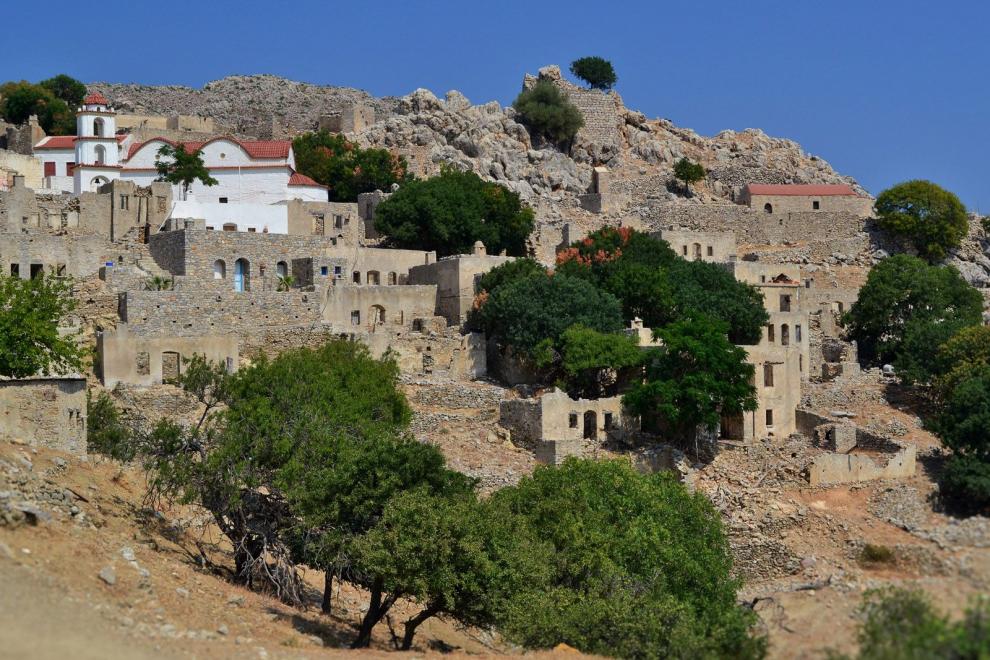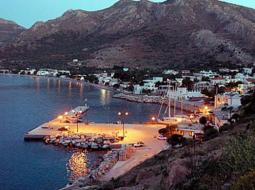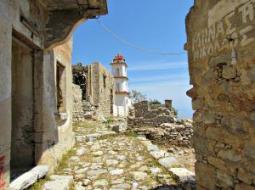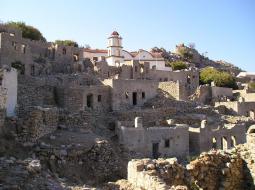Thessaloniki gets ready for its metro launch in November
The underground rapid transit lines have been under construction for almost two decades due to various project delays
 TheMayor.EU logo
TheMayor.EU logo 
The island history originated after a territorial separation from the coast of Asia.
During the years of its existence, the island was inhabited by a mixture of nations and accepted a mixture of civilizations. The island passed sequentially from pre-Greeks to Dorians in 1000 BC, after that to the Venetians, to the Knights of St. John in 1310 AD, to the Turks in 1552 AD, in order to return to the Greek state in 1948.
Tilos has been inhabited ever since the Neolithic era (8000-7000 BC), to which the important and impressive paleontological findings of prehistoric elephants bear witness. Their skeletons were found after the excavations that took place in Charkadio cave. Other excavations prove the Minoans and subsequently the Mycenaeans also lived on Tilos, as in other Dodecanese islands. The island was also inhabited by the Pelasgians and this can be seen from the walls that were found.
Herodotus spoke of the golden age of Tilos in the 7th century BC, during which Tilini of Gelas colonized Sicily with Tilos islanders and Lindos residents.
In the 5th century BC, Tilos became part of the Athenian confederacy and remained dependent upon the island of Rhodes, until it passed to the Romans. The richness of the archaeological finds dating from the Roman and early-Christian times reflects the island prosperity.
As long ago as 350 BC, the poet Irinna was born on Tilos and at an early age became inspired by the rich and diverse natural beauty of the island, the variety of its landscapes and the surrounding Aegean Sea. The island's prosperity continued until the great earthquake of 550 AD. After that, Tilos followed the history of Rhodes, with which it was unified.
During the Byzantine era Tilos together with Nisyros, Kos and Samos constituted the Prefecture of Samos. The Knights of St. John inhabited the island and rebuilt or built three of the castles that exist on the island.
In 1522 the island became part of the Ottoman Empire and was under the special financial and administrative status of “maktou” islands.
Finally, in 1948 Tilos returned to the modern arms of its maternal Hellenistic past.
Source: tilos.gr
Tilos is a small Greek island and municipality located in the Aegean Sea. It is part of the Dodecanese group of islands, and lies midway between Kos and Rhodes. It has a population of 897 inhabitants. The island of Tilos has an area of 45 square kilometers.
Tourism is the main business of the inhabitants during the summer months. They are also engaged in farming, livestock farming and fishing. Renewable energy is now being developed on the island.

The village of Livadia quietly hugs the shore next to the port at the foot of the mountains that shelter Livadia Bay. As you face eastward, the silhouette of the mountains of Turkey appear to rise out of the waters of the Aegean and the island of Simi can be seen.
Agriosykia Castle emerges from the rocky mountaintop to cast its watchful eye over Livadia as it has done unfailingly for the past six hundred years. The gracefully sculpted Italian architecture of the Tilos Police Station building at the port is a reminder of the Italian domination of the island from 1912 until 1948. The long beach in Livadia and the warm, crystal water entice visitors.
At the village of Livadia you will find the port of the island, which has recently been reconstructed and offers better and safer anchoring services for boats and crafts.
Going around the roads of the village, you will find plenty of rooms for rent, fifteen tavernas and a few cafes that overlook the beach or are tucked away in the village, four super markets, as well as village stores where you are sure to find some lovely gifts, local delicacies and artistic creations to take home with you. Furthermore, there is a local accommodation office at the port which will serve you and give you accurate information about the prices of the offered accommodations on the island.

The village of Mikro Horio was established in the 15th century in the hills above Livadia and was abandoned after World War II by its residents. Some of them moved to Livadia to build a new life as business developed around the port.
Surrounding this mountainous medieval village site, one finds ancient stone walls made centuries ago to corral the animals and a plethora of tiny churches with their ruggedly rustic architecture barely perceptible against the stony hillsides. In this village where there is no sign of life, the venerable, twisted trunks of windswept oak and olive trees guard the secrets of the island's past and offer to the birds a lodge in order to build up their nests every spring.

Tilos is waiting for you ... with nineteen beaches, twelve mountains with flowing natural springs, seven medieval castles, a Byzantine monastery, two hundred churches, a cave with many excavations, a village cultural monument, over a hundred species of birds, hundreds of wild flora. Keeping the physiognomy of the past, Greece of present opens up in Tilos.
Address: Megalo Chorio, Tilos 85002